Drawing a perfect circle without a compass may seem daunting, but with a touch of creativity and resourcefulness, it’s entirely achievable.
This skill can be valuable in various situations, especially when a compass is unavailable. Whether you’re an artist, student, or someone needing a quick solution, mastering alternative methods for drawing circles proves beneficial.
There are numerous techniques to explore, from using common household items to employing basic geometric principles.
In this exploration, we’ll delve into various approaches, providing practical insights and step-by-step instructions on drawing circles freehand, empowering you to express your creativity without relying on traditional drawing tools.
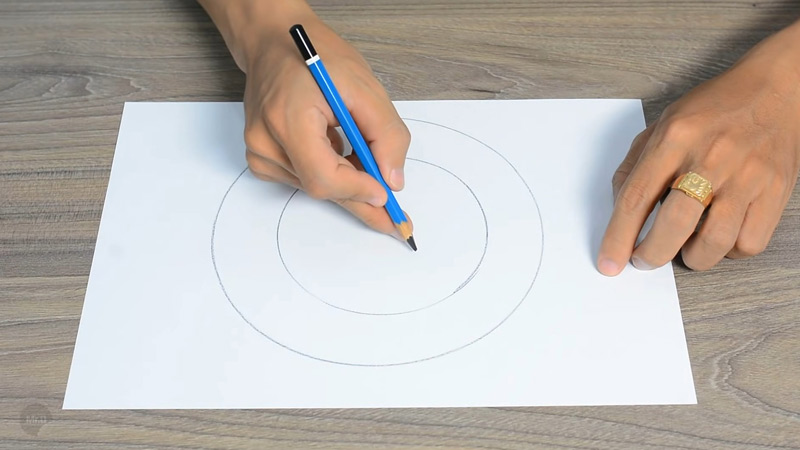
7 Methods to Draw a Circle Without a Compass?
Drawing a circle without a compass may initially seem challenging, but with some creativity and practice, you can master a few techniques to achieve this freehand.
Here are some common methods by which you can learn how to draw a perfect circle without a compass:
1. The Coin Method
Choose a coin that aligns with the desired size of your circle. Position the coin where you want the center of your circle to be on the paper.
Gently but firmly hold the coin in place and use a pencil to trace around its circumference. This straightforward method provides a quick way to achieve a circular shape without needing a compass.
2. The String Method
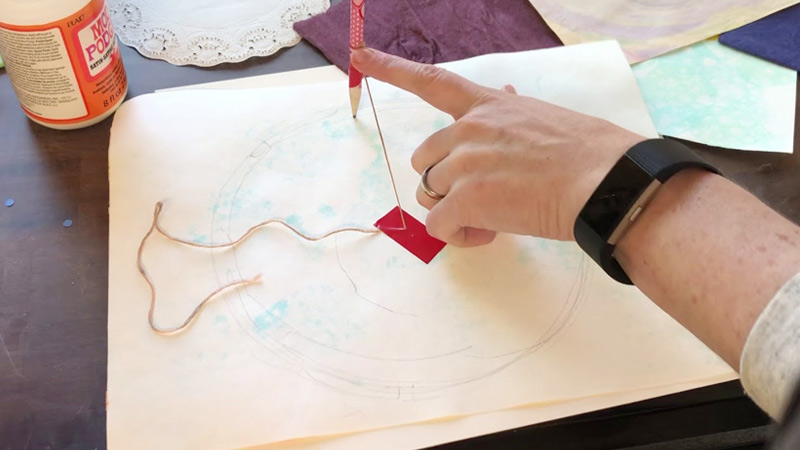
Cut a piece of string to the intended radius of your circle. Tie one end of the string to a pencil and hold the other end at the center point of your paper.
Keep the string taut as you rotate the pencil around the center, allowing the pencil to draw the circle. This technique is simple yet effective, especially for larger circles.
3. The Paper Fold Method
Fold a square piece of paper diagonally to create a right-angled triangle. Fold it again to form a smaller triangle.
Trim away the excess paper along the folded edges, and you’ll have a circular template when you unfold the paper.
Place this template on your drawing surface and trace around its edge to create a perfect circle.
4. The Thumbtack and String Method
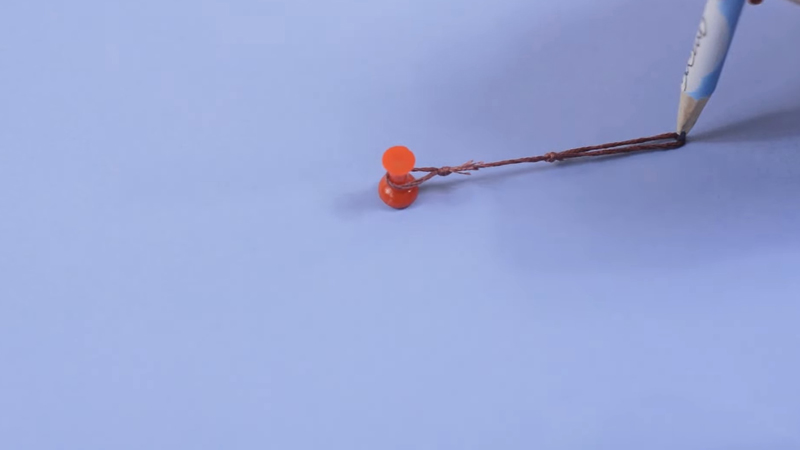
Insert a thumbtack at the center of where you want the circle. Tie a string to the thumbtack, ensuring it has the desired radius length.
Hold the string taut and move the pencil around the thumbtack, allowing the string to guide the pencil in drawing the circle. This method is particularly useful for precise circles.
5. Use Objects as Templates
Search your surroundings for circular objects like lids, caps, or bowls. Place the chosen object on your paper’s center point and trace around its outline.
This method allows for various circle sizes and is a creative way to utilize everyday items as drawing tools.
6. Freehand Technique
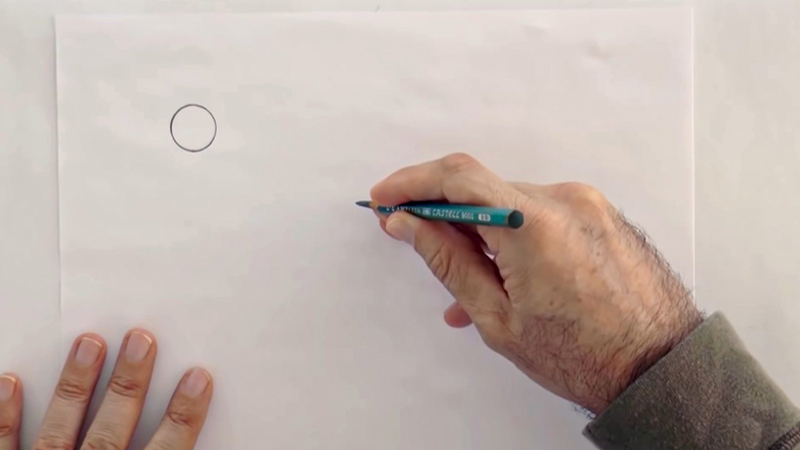
Develop your freehand circle-drawing skills by practicing small, controlled movements. Begin with light, loose strokes, gradually refining the shape as you gain confidence.
Experiment with different hand positions and find the motion that feels most comfortable for you. Over time, your ability to draw circles without any aids will improve.
7. The Quadrant Method
Start by drawing four straight lines to create a square. Add diagonals from one corner to the opposite, intersecting at the center of the square.
Connect the center point to each corner, forming a circumscribed circle within the square. This geometric approach provides an alternative method for drawing circles without a compass.
How Do You Draw an Oval Without a Compass?
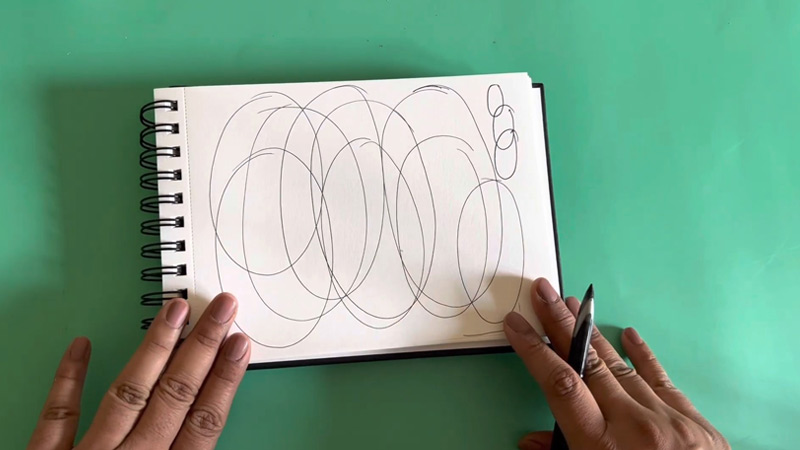
Drawing an oval without a compass may seem challenging, but you can employ several creative methods to achieve this shape freehand.
Here are some techniques to help you draw an oval:
The String Method:
- Cut a piece of string to the desired length of the oval’s long axis.
- Tie one end to a pencil and hold the other end at the center point of the paper.
- Move the pencil around the center point, maintaining tension on the string to create the oval shape.
The Ellipse Template:
- Create a template by cutting out a paper ellipse.
- Place the template on your drawing surface and trace around its edge to transfer the oval shape.
Freehand Technique:
- Practice drawing ovals freehand by making smooth, controlled movements.
- Start with a light sketch and gradually refine the shape until you achieve the desired oval.
The Object Method:
- Find an object with an oval shape, like an egg or a specific tool.
- Place the object on the paper and trace around its outline to create the oval.
The Quadrant Method:
- Draw a square and extend the lines to create an “X” from corner to corner.
- Connect the midpoints of each side to form a smaller square inside.
- Draw curves connecting the midpoints of opposite sides, creating an oval within the square.
FAQs
Can I draw a perfect circle without a compass?
Absolutely! While achieving absolute perfection might take some practice, various methods like using coins, strings, or freehand techniques can help you draw circles without a compass.
What’s the easiest way to draw a circle without a compass?
The coin method is one of the simplest. Just pick a coin with your desired radius, place it where you want the center, and trace around it.
Are there alternative methods for drawing circles freehand?
Yes, the string method is a great alternative. Tie a string to a pencil, hold the other end at the center, and rotate the pencil to create a circle.
Can I draw circles without any tools or aids?
Yes, you can practice the freehand technique. With regular practice, you can develop the skill to draw circles confidently without relying on any external tools.
Wrap Up
Mastering the art of drawing circles without a compass opens up a world of creative possibilities and problem-solving.
Through diverse techniques such as the coin method, string method, or freehand drawing, one can effortlessly overcome the absence of traditional tools.
These methods foster resourcefulness and encourage experimentation and personal style in artistic endeavors.
Whether you’re an artist, student, or simply in need of a quick solution, the ability to draw circles freehand is a valuable skill.
With practice and exploration, you’ll find a method that suits your preferences, empowering you to express your creativity in a limitless, compass-free canvas.
Leave a Reply